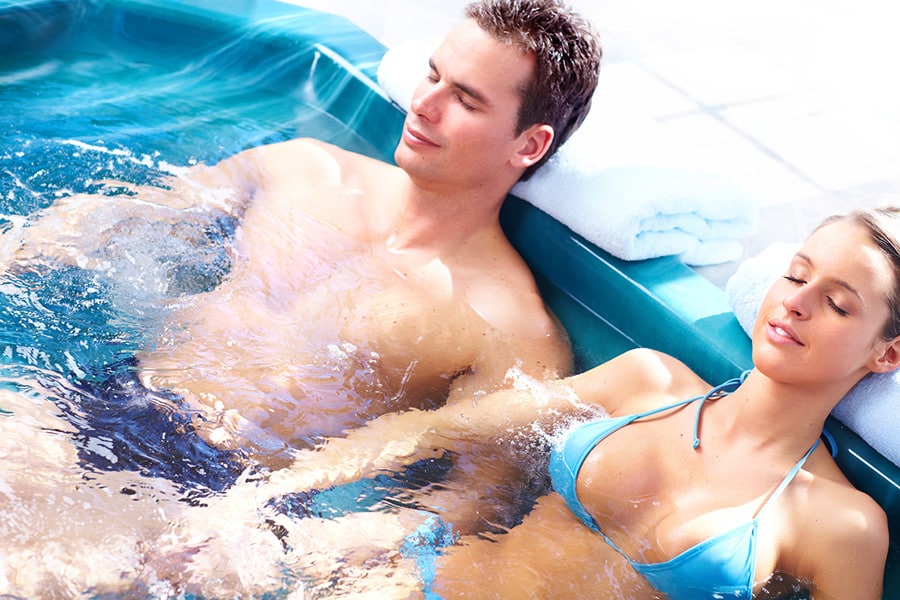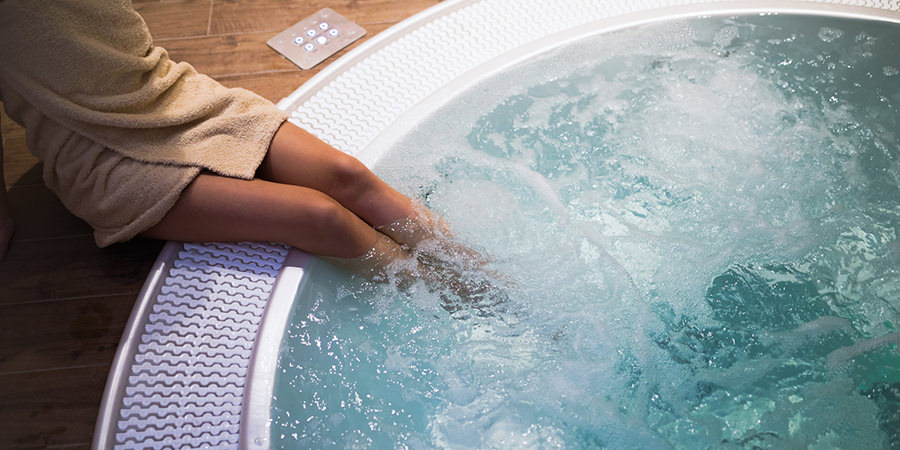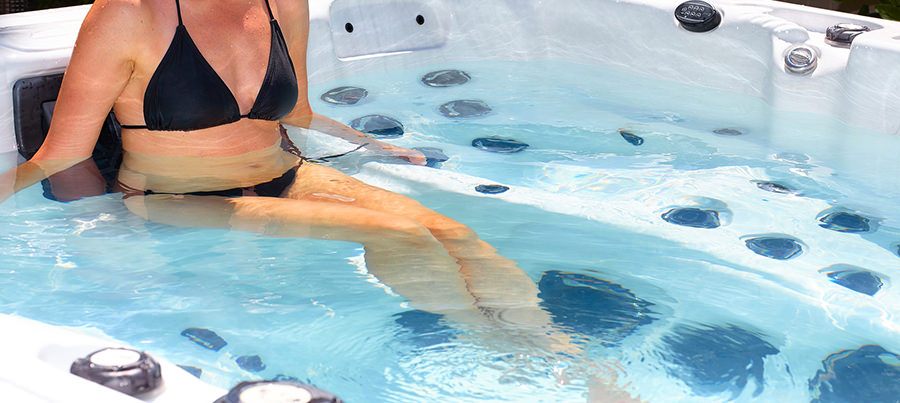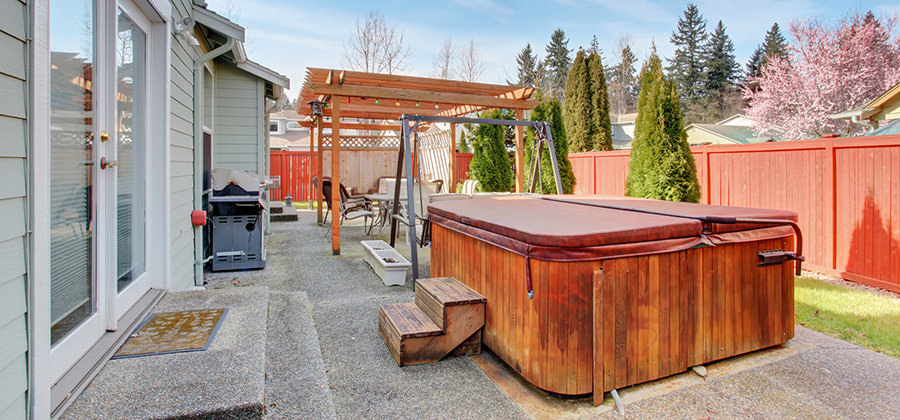
With any major purchase, most people want to know how much bang for their buck they are getting! Hot tubs are particularly expensive so it’s important to know how long your hot tub might last and how much value for money you’re likely to get out of your investment. Is it simply a case of getting what you pay for or are there other things to look out for? How can you avoid spending a large amount of money only to be saddled with expensive repair bills shortly afterwards? After all, hot tubs are supposed to be life-enhancing and relaxing and not a source of stress and worry. I decided to do some research into how long hot tubs last and this is what I found out:
So, how long do hot tubs last? A hot tub will last between 5 and 25 years. This will depend upon the quality of the components and the skill of the design and manufacturer. A well maintained hot tub will also last longer than a hot tub where maintenance has been neglected.
Hot Tub Life Expectancy
At the bottom end of the hot tub market, a budget hot tub will possibly only last between 3 and 5 years before it becomes uneconomical to repair. This is not to say that budget hot tubs aren’t worth purchasing or aren’t good value for money because in some instances they are a very good solution.
However many budget hot tubs are made from cheaper, more difficult to source components so repairing them can become expensive and difficult. You will also find that the shell on a budget hot tub will last nowhere near as long as the high-quality shell on a more expensive model. Once the shell on a hot tub has started to disintegrate or has cracked or broken in some other way then the hot tub is in essence completely useless. However, if you maintain a budget hot tub well and maybe don’t use it all year round then it could well offer very good value for money if it lasts for a good 5 years.
At the other end of the spectrum, a luxury hot tub could be expected to last for between 20 and 25 years. Again the quality of the shell is of prime importance and, to a certain extent, if the shell is in good condition a hot tub can be repaired indefinitely. Broadly speaking replacing heaters and pumps and certainly covers should be expected throughout the lifetime of the hot tub. It’s rather similar to replacing brake pads, exhausts and tyres on a car. If the rest of the car is in good condition it makes economic sense to do this. However, on a car, once the chassis or body starts to rot then it often doesn’t make economic sense to repair it. This is similar to a hot tub in as long as the shell is OK then it’s possibly worth doing a repair, however, once the shell has started to deteriorate it becomes much less of a good idea.

So, in theory at least, it would be possible to buy a top of the range hot tub and expect to get 25 years of service out of it. Bear in mind that a hot tub of this calibre should also be extremely thermally efficient and will also save you on your energy bills year after year. If you look at the figures carefully you might even find that, over say a 20 or 25 year period it would be significantly more economical to buy one top of the range hot tub rather than 4 or 5 cheaper models. The top of the range hot tub would also offer a much better hot tub experience and would probably only really need changing when it’s technology became significantly out of date when compared with the thermal efficiency technology of new models 25 years in the future.
In the middle of the market, a mid-range hot tub could be expected to last for between 10 and 15 years. To a certain extent this is a bit of a grey area because, if you do the calculations and take into consideration the running costs of a less efficient middle of the range hot tub, then you might find that it is less expensive in the long run to purchase a better quality model in the first place.
So in terms of the longevity of a hot tubs life is always better to buy the best quality hot tub that you can afford. You can find out a lot more about how much hot tubs cost to buy in my post here.
Why do some hot tubs last longer than others?
There are a number of factors that affect how long a hot tub will last ranging from the quality of the design through to how well the hot tub has been put together and also the quality of the individual components. In many ways, a hot tub is only as good as it’s weakest component so even if a majority of the hot tub lasted for many years if one particular component kept on failing the hot tub of may become expensive to run and uneconomic to repair. With the first generation hot tubs in the 80s and 90s this wasn’t so much of a problem as they were extremely simple. Generally speaking, these early hot tubs were simply a shell with a heater, a pump and a handful of jets. A modern hot tub today may have several pumps, some different heating elements as well as a technologically advanced filtration system. Modern hot tubs also might have touch controls, electronic displays, timers, hi-fi, lighting and entertainment systems. All of these gadgets and gizmos have the potential to go wrong and to make the repair of the hot tub uneconomical. You can check out my recommended hot tub hi fi solutions here.
Here are a few of the elements that influence the lifespan of a hot tub:
The quality of the hot tub shell. – Less expensive shells are often made of cast acrylic backed with ABS plastic. This is because it’s a cheap material and a relatively simple and cheap process to manufacture. However, the plastic backing is not as resilient as backing the acrylic shell with fibreglass but this is a more expensive but longer lasting proposition. You’ll often find that less expensive and medium-range hot tubs have inferior shells that will only last between 5 and 10 years. Top of the range hot tubs which have the fibreglass backing can be expected to last significantly longer with 20 to 25 years being a realistic possibility.
More recently rotationally moulded shells are being introduced. These are very lightweight and tough and come with the added advantage of being significantly more environmentally friendly as well as long-lasting. Predictably these are more expensive and are usually only available on very high-end hot tubs.

The quality of components: It makes sense that the higher quality the components are in your hot tub the longer they will last. Hot tubs that are built at the more budget and mid-end of the range are being designed and built to a cost. Inevitably some lower quality components will be used and these often become the weakest link in the hot tub and become problematic when they wear out or break. There are also problems with budget hot tub components not been particularly easy to source and replace. Often they are unbranded and it can be extremely difficult to get a suitable replacement for some items which can mean that a hot tub can be completely unrepairable solely due to the impracticality of getting a new part. This is well worth checking out with your hot tub supplier if you are thinking of getting a new hot tub. In the long-term it would make much more sense to pay a bit more but have the ongoing security of knowing that your hot tub is repairable.
Quality of the design: A well-designed hot tub will have components that complement each other and that works smoothly together. It will also be ergonomically easy to service maintain and replace components in a well-designed hot tub which will make repair and maintenance cheaper and more convenient. In a poorly designed hot tub there are often certain areas where components are working against each other that cause excessive stress and strain on the system and these areas become weaknesses where the hot tub will break down and need parts replacing or maintenance. A well-designed hot tub will have these design flaws designed out of them and none of the components should be put under excessive stress or strain.
Quality of construction: It’s no good having a fantastic design and superb components if the workmanship on the hot tub isn’t up to scratch. Poorly fitted or finished components will not work as well as those that have been connected up and fitted correctly. A high-quality hot tub will have gone through a number of quality control tests before it is sent out for purchase and the whole process of its construction will have been carried out to the highest possible standards.
How do you know if you are buying a long lasting hot tub?
So, with all of this information to hand, it will become easier to work out which hot tub is right for you, although with so much choice and so many manufacturers it’s not an easy task. I would highly recommend going for a hot tub that has a really comprehensive warranty with it. Compare the warranties offered by different manufacturers for different models but broadly speaking a hot tub with an extensive and long warranty should give a long and relatively trouble-free length of service. No manufacturer is going to offer a comprehensive warranty to a product that they feel will go wrong within the warranty period and cost them further money to fix.
It’s also a really good idea to look at online reviews of the hot tub or hot tub manufacturer that you are thinking of buying from. Try to look for reviews that are impartial. many hot tub websites or affiliated with particular manufacturers and it can be quite difficult to get an objective viewpoint. Look for reviews on non-manufacturer websites by real owners and have a good look at the mid-range reviews if you can as these will give you a more balanced idea of the pros and cons of each hot tub. (Look here for example) Often the five-star reviews just say that the hot tub is amazing and the one-star reviews say that they are terrible. The ones in the middle can be far more valuable and revealing.

Hot tub maintenance for longer life
Just as with a car, keeping your hot tub in good condition with regular servicing and maintenance will make a big difference to its lifespan. On a day-to-day level this means that you need to keep your water chemistry correct and you need to keep your hot tub clean. You also need to drain it at regular intervals and have it serviced properly as per the manufacturer’s instructions. If your hot tub gives you any error messages or starts making any strange noises, leaking or doing anything else out of the ordinary then rather than leaving it, you should take action and try to find out the cause of the problem before any further damage has occurred.
The combination of a high-quality hot tub with a full maintenance and service schedule should ensure that you get the maximum length of service out of your hot tub for the least amount of financial outlay.
How to make your hot tub last longer
Check your water chemistry regularly – Regularly check your total alkalinity and your pH making sure it is between 7.2 and 7.6. You also need to check the calcium hardness levels in your hot tub regularly. Calcium build-up can be problematic to the internal working parts and if the water becomes too acid or alkaline it can cause damage to the internal workings as well. You will also find that if your pH levels are out your sanitizer, particularly if you are using chlorine, will become less effective.
Read my post here to find out which chemicals you need and how to use them.
Check regularly for water leaks – Water leaks inside the cabinet can cause all sorts of problems. If calcium or limescale is allowed to form then it can potentially damage parts of the hot tub and water leaking onto electrical items can be dangerous. Similarly, if you have water leaking from the pump or other components it can, in the long-term lead to rust and corrosion and the possible replacement of major working parts. Often a leak will simply be able to be repaired by the replacement of a cheap and simple gasket. This is not usually a complicated or majorly expensive job when compared with the amount of damage that a water leak can potentially do to your hot tub. I have a handy post here all about hot tub water leaks.
Check regularly for strange noises – Grinding or rumbling noises in your hot tub can be indicative of bearings wearing or internal moving parts becoming worn out. It’s tempting to ignore such noises as they always sound expensive to fix. However, more often than not, if such a noise is spotted early it might well be possible to replace the worn or damaged part before greater damage is done. The chances are this will be less expensive this sooner the repair is made.
Replace and clean filters on schedule – If you have dirty filters then it is much harder work for the pump to suck water through them. Over time this can mean that the pumps are working too hard and will wear out or burn out prematurely. If your filters are dirty it also will probably mean that your water isn’t particularly clean and dirty water can also create all sorts and blockages and difficulties with the internal working of your hot tub. As soon as your water becomes cloudy or foam starts to develop, check your water chemistry and try to fix the problem. Not only can it be harmful to your health if you sit in dirty water it can also damage your hot tub.
Change the water every 3 months – Clean and clear water is much better for your hot tub of them dirty water full of bacteria and organic matter. Most hot tubs will need a full drain and water change every 3 months or so but this will depend upon the effectiveness of your filtration system and how well you maintain your water chemistry. During a full drain and refill you should give your hot tub a thorough clean and also flush out the pipes to get rid of any debris.
Buy a high-quality cover – A high-quality hot tub Cover will help to keep the water warm which will mean that your hot tub heater will not have to be used as much. It will also protect the hot tub from the elements and help to keep it clean. Read my guide on what to look for in a new cover here.

Buy a tarpaulin/full cover – For the winter months or for times when the weather isn’t so great then a full cover for the hot tub will help to protect it from the elements and keep it in good condition. Keeping all of the hot tub as clean and warm as possible is the aim and by completely enclosing it in a full cover you will help to preserve your hot tub for as long as possible.
Stick to the service schedule – Check with your hot tub handbook and make sure that you are aware of when your hot tub will need servicing. This may be an ongoing expense but in the long-term, it will save you money. If the service intervals are far apart then work out a system whereby you make a note in your diary or calendar for when your hot tub needs to be serviced and book the appointment a good few weeks before to make sure that you don’t overrun the service intervals.
Do not allow your hot tub to freeze – Water freezing inside a hot tub is highly likely to damage the internal workings and leads to expensive repairs and a shortened life expectancy. If you live in an area where the temperature regularly goes below zero degrees then either keep your hot tub on throughout the winter at working temperature to prevent freezing or carefully follow the winterizing instructions in my post here.
Related Questions:
How long do inflatable hot tubs last? Depending upon how well they are looked after inflatable hot tubs can last up to 5 years. The inflatable shells are prone to puncture and some owners report that the mechanical components are not particularly robust. The average lifespan seems to be between 2 and 3 years.
How long do hot tub heaters last? A hot tub heater should last for 5 years or more but it will depend upon the quality of the heater and how well the hot tub is maintained. It should be expected that heaters will need replacing as part of the ongoing servicing and maintenance of a hot tub throughout it’s life.
How long do hot tub covers last? Hot tub covers last for around 5 years. Hot tub covers eventually become saturated with water and need replacing, the better quality the cover is the longer it will last and the more thermally efficient it will be.

